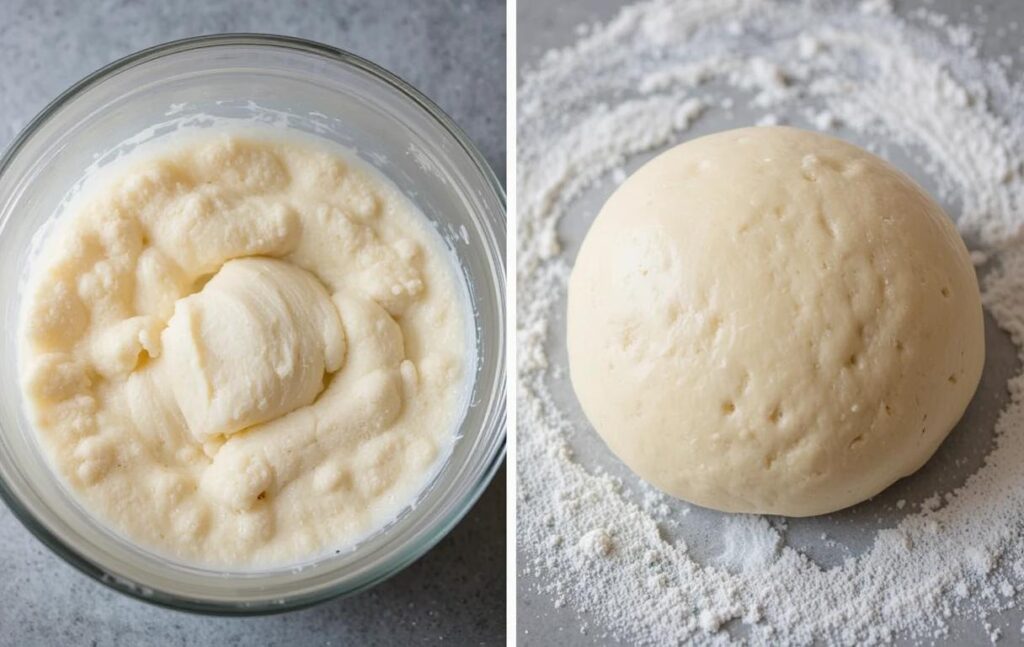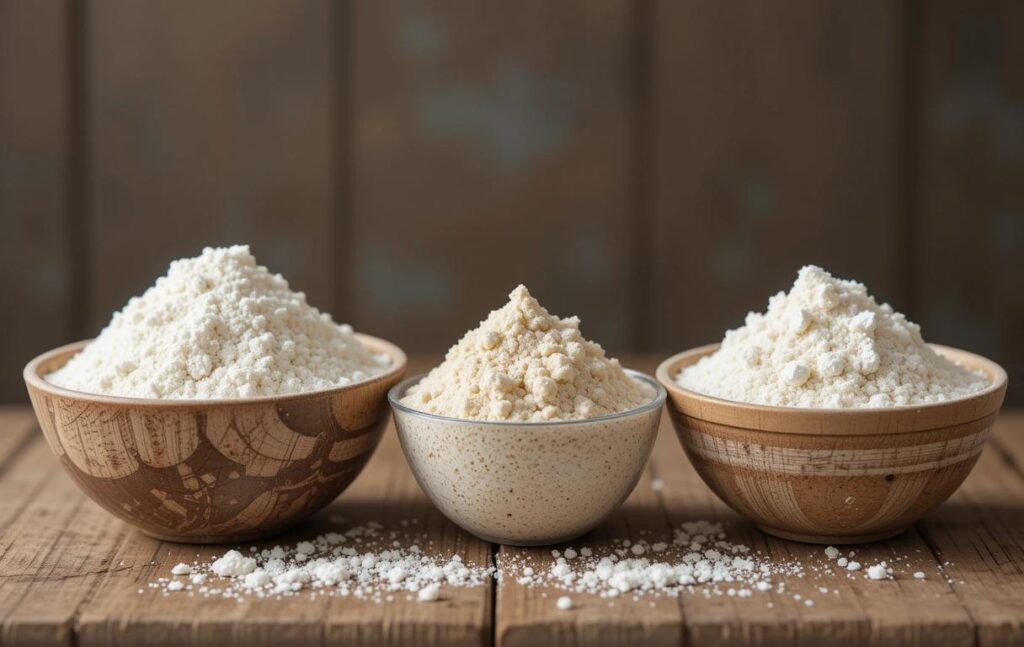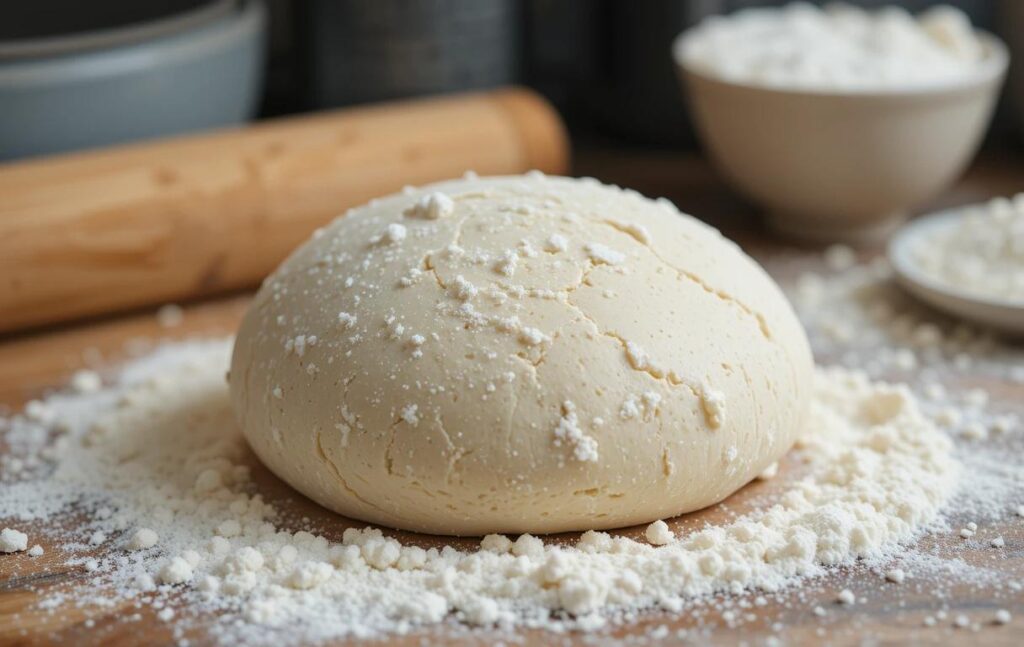Introduction: Why Are My Sourdough Bagels So Chewy?
Sourdough bagels are beloved for their rich flavor, dense crumb, and satisfying chewiness. However, for many home bakers, achieving the perfect texture can feel like a challenge. Why are my sourdough bagels so chewy? This is a common question among sourdough enthusiasts. The good news is, the answer lies in the delicate balance of ingredients, processes, and techniques that bring these bagels to life.
In this article, we’ll explore the science behind sourdough bagels, uncover the factors that contribute to their chewiness, and share expert tips for troubleshooting and adjusting their texture to suit your taste. Whether you’re a seasoned baker or just getting started, you’ll walk away with actionable insights to create the best sourdough bagels every time.
The Science Behind Sourdough Bagels
What Makes Sourdough Bagels Unique?
Sourdough bagels stand apart from regular bagels due to their natural fermentation process. Unlike bagels made with commercial yeast, sourdough relies on a live culture of wild yeast and bacteria. This fermentation process not only enhances the flavor but also plays a significant role in the texture of your bagels.
The tangy taste and chewy texture of sourdough bagels are a result of the interactions between gluten development, fermentation time, and the unique boiling and baking processes.
The Role of Gluten in Chewiness
Gluten is a protein found in wheat that gives dough its elasticity. When you knead the dough, gluten strands form, creating a network that traps gas produced during fermentation. This network is responsible for the bagel’s structure and chewiness.
If your bagels are overly chewy, it could indicate:
- Excessive gluten development: Overmixing or kneading can make the dough too tight.
- High-protein flour: Bread flour, which is high in protein, contributes to a denser, chewier crumb.
Tip: Consider mixing bread flour with all-purpose flour to balance chewiness with softness.
Fermentation and Acidity

Fermentation is the heart of sourdough baking. As the sourdough starter ferments, it produces lactic acid and acetic acid, which strengthen the gluten and add flavor. While this is great for flavor, prolonged fermentation can toughen the gluten structure, increasing chewiness.
- Underproofing leads to dense, gummy interiors.
- Overproofing allows too much acid buildup, creating a tough texture.
Boiling vs. Baking Processes
Before hitting the oven, bagels are traditionally boiled. This step gelatinizes the outer starch layer, locking in moisture and creating the shiny crust we all love. The boiling time also affects the texture:
- Shorter boiling time: Creates a softer crust and less chewiness.
- Longer boiling time: Results in a denser, chewier crust.
Tip: Experiment with boiling times to adjust the level of chewiness to your liking.
Troubleshooting Chewy Sourdough Bagels
Even with the best intentions, sourdough bagels can sometimes turn out chewier than expected. Let’s explore common culprits and how to address them.
1. Did You Overmix the Dough?
Kneading is crucial for developing gluten, but overdoing it can lead to excessively chewy bagels. Overmixing stretches the gluten too much, creating a tough texture.
How to Fix It:
- Knead just until the dough is smooth and elastic. A good rule of thumb is to perform the “windowpane test”: stretch a small piece of dough between your fingers. If it forms a thin, translucent sheet without tearing, you’re done.
2. Is Your Starter Healthy?
A weak or overly acidic sourdough starter can impact the dough’s structure and texture. An underactive starter may not provide enough rise, leading to dense and overly chewy bagels.
How to Fix It:
- Feed your starter with fresh flour and water 6-8 hours before using it. Look for a bubbly, doubled-in-size starter with a tangy but not overpowering aroma.
3. Proper Proofing: Timing Matters
Proofing, or letting the dough rise, allows the gluten to relax and the yeast to ferment. Insufficient proofing creates dense, chewy bagels, while overproofing toughens the gluten structure.
How to Fix It:
- Use the “poke test” to check proofing. Gently press your finger into the dough:
- If it springs back immediately, it’s underproofed.
- If it holds the indentation slightly, it’s ready.
- If it collapses, it’s overproofed.
Tip: Maintain a room temperature of around 75°F (24°C) for consistent proofing.
4. Water Quality and Temperature
The water used during boiling and in the dough can affect chewiness. Hard water, which contains more minerals, can strengthen gluten excessively. Similarly, boiling water that’s too hot or not hot enough alters the starch gelatinization process, impacting texture.
How to Fix It:
- Use filtered or distilled water for your dough.
- Boil bagels in water that maintains a steady simmer (about 200°F or 93°C).
5. Overproofing or Underproofing?
Getting the timing right is a balancing act. Overproofed dough can lead to an overly tangy flavor and tough texture, while underproofed dough won’t develop enough structure.
How to Fix It:
- Stick to a 12–24 hour bulk fermentation time at cool temperatures to prevent over-acidification.
How to Adjust Chewiness to Your Preference

While some bakers embrace the chewiness of sourdough bagels, others prefer a softer texture. Adjusting specific elements in your recipe and process can help you control the chewiness to suit your taste.
1. Experimenting with Flour Types
The type of flour you use significantly impacts the chewiness of your bagels. High-protein flours like bread flour promote gluten formation, leading to a denser texture.
How to Adjust:
- For a less chewy bagel, mix bread flour with all-purpose flour in a 50/50 ratio. All-purpose flour has a lower protein content, resulting in a softer crumb.
- Want even more softness? Add a small percentage of whole wheat flour, which weakens gluten slightly while adding depth of flavor.
Tip: Avoid using cake flour or pastry flour as they lack the strength needed for bagels.
2. Altering Hydration Levels
Hydration refers to the ratio of water to flour in your dough. Sourdough bagels with lower hydration tend to be firmer and chewier.
How to Adjust:
- For softer bagels: Increase the water content slightly (e.g., from 60% hydration to 65%). This makes the dough more pliable and results in a softer texture.
- For firmer bagels: Stick to traditional low-hydration recipes (around 55%-58%).
Tip: Be cautious when increasing hydration, as overly sticky dough can be harder to shape and boil.
3. Balancing Sweeteners and Salt
Sugar and salt not only affect the flavor of bagels but also their texture. Sweeteners like honey, malt syrup, or sugar tenderize the dough by weakening gluten. On the other hand, salt strengthens gluten, contributing to chewiness.
How to Adjust:
- For a softer bagel, increase sweeteners slightly while maintaining balance (e.g., 1 tablespoon honey for every cup of flour).
- Reduce the salt marginally but not excessively—too little salt can result in bland-tasting bagels.
4. Controlling Boiling Time
Boiling is a pivotal step that directly affects bagel chewiness. The longer a bagel is boiled, the thicker and chewier its crust becomes.
How to Adjust:
- For softer bagels, boil them for just 30 seconds per side. This will create a thinner crust.
- For chewier bagels, extend the boiling time to 1–2 minutes per side.
Tip: Adding barley malt syrup or baking soda to the boiling water enhances the golden crust and boosts flavor.
5. Testing Baking Time and Temperature
The bake time and temperature play a crucial role in texture. Bagels baked at higher temperatures for longer durations tend to be crisper and chewier.
How to Adjust:
- For a softer texture, bake at a lower temperature (around 375°F or 190°C) and check for doneness after 20–25 minutes.
- For a crisp, chewy crust, stick to 425°F (220°C) and bake for 25–30 minutes.
Secrets to Perfect Sourdough Bagels Every Time

Crafting the ideal sourdough bagel requires attention to detail and mastering a few techniques that ensure consistent results. Here are some secrets and best practices to elevate your sourdough bagels from good to extraordinary.
1. Prepping the Perfect Dough
The foundation of any great bagel lies in the dough. Starting with the right consistency and hydration sets the stage for a well-structured and flavorful bagel.
Steps to Prep Perfect Dough:
- Measure Ingredients Precisely: Use a digital scale for accuracy, especially for flour and water ratios. Consistency is key in sourdough baking.
- Autolyse the Dough: Let the flour and water sit together for 20–30 minutes before adding salt and starter. This enhances gluten development without overmixing.
- Don’t Skip Rest Periods: Resting between kneading allows the gluten to relax and ensures an even texture.
Tip: Aim for a firm yet pliable dough that holds its shape well during shaping and proofing.
2. Maintaining an Optimal Baking Environment
Baking sourdough bagels requires precision, and your kitchen environment can significantly affect the outcome.
Tips for an Ideal Baking Environment:
- Humidity: Use a baking stone or steel and place a shallow tray of water in the oven to create steam. This helps form a crisp crust.
- Oven Positioning: Place bagels on the middle rack to ensure even baking.
- Temperature Control: Preheat your oven thoroughly to 425°F (220°C). Use an oven thermometer for accuracy, as many ovens run hotter or cooler than the set temperature.
3. Shaping Like a Pro
Proper shaping ensures your bagels maintain their structure during proofing, boiling, and baking.
How to Shape Bagels:
- Divide the dough into equal portions (around 3–4 ounces each).
- Roll each portion into a smooth ball.
- Use your thumb to poke a hole in the center, then gently stretch it into a uniform ring.
Tip: Aim for a hole slightly larger than you’d like, as it will shrink during proofing and baking.
4. Testing for Doneness
Bagels can sometimes appear done on the outside but remain undercooked inside. Proper doneness ensures the right texture and flavor.
How to Check for Doneness:
- The crust should be evenly golden brown.
- When tapped on the bottom, bagels should sound hollow.
- For precision, use an instant-read thermometer—bagels should reach an internal temperature of 190°F–200°F (88°C–93°C).
5. Storing and Enjoying Your Bagels
Freshly baked sourdough bagels are best enjoyed on the same day, but proper storage preserves their texture and flavor for longer.
Storage Tips:
- Short-term: Store bagels in an airtight container at room temperature for up to 2 days.
- Freezing: Slice bagels in half and freeze them in a resealable bag. Toast directly from frozen for the best results.
FAQs About Sourdough Bagels
1. Why do bagels need to be boiled?
Boiling is a crucial step that creates the bagel’s signature crust and chewy texture. The hot water gelatinizes the outer starch layer, locking in moisture and giving the bagels their glossy surface. Without boiling, your bagels would resemble regular bread rolls rather than authentic bagels.
2. Can I reduce chewiness without losing texture?
Yes, reducing chewiness while maintaining structure is possible! Use a blend of bread flour and all-purpose flour, and experiment with slightly higher hydration. Additionally, reduce the boiling time to create a softer crust.
3. Why does my sourdough starter affect the texture?
A healthy sourdough starter provides the natural yeast and bacteria needed for fermentation. A sluggish or overly acidic starter can lead to dense, overly chewy bagels. Feeding your starter regularly ensures active fermentation and a balanced texture.
4. What’s the best way to store chewy sourdough bagels?
To maintain freshness, store bagels in an airtight container at room temperature for up to 2 days. For longer storage, slice and freeze the bagels in resealable bags. Toast frozen bagels directly for a crisp, fresh texture.
5. Can I freeze bagels to preserve their texture?
Yes, freezing is an excellent way to preserve texture and flavor. Slice the bagels before freezing so you can toast them straight from the freezer. Avoid microwaving, as it can make them soggy.
6. How long should I proof sourdough bagels?
Proofing time depends on your room temperature and starter activity. Typically, 12–24 hours of cold proofing in the fridge allows flavors to develop without overfermenting. Use the poke test to determine readiness before boiling.
Conclusion: Master the Perfect Sourdough Bagel Texture
Crafting sourdough bagels is both an art and a science. Their chewiness, while a hallmark of their appeal, can be adjusted to suit your preferences with the right techniques. From understanding gluten development and fermentation to tweaking flour types and boiling times, each step in the process offers opportunities to refine the texture.
By addressing common issues like overmixing, underproofing, or starter health, you can troubleshoot chewy bagels and achieve consistently delicious results. With practice, you’ll master the art of baking sourdough bagels that balance flavor, texture, and crust perfectly.
Start experimenting with these tips today, and enjoy the satisfaction of creating sourdough bagels that rival the best bakeries. Happy baking!
Bread Machine Bagels
Related Recipes
- “Tuna Tomato Sauce Pasta Recipe“: A tomato-based recipe showcasing another way to use tomatoes.
- “Baked Chicken Fettuccine Alfredo with Broccoli“: Another comforting dish that can be complemented with tomato-based sauces.
Ingredient-Focused Content
- “Lions Mane Mushroom Recipe“: Suggest using a tomato gravy as a flavorful addition for plant-based dishes.
Cooking Techniques and Enhancements
- “Mango Habanero Salsa“: Explore complementary uses of sauces and gravies for flavor diversity.
Storage and Reuse Tips
- “Sous Vide Recipes“: Recommend tomato gravy as a sauce for sous vide-cooked meats or vegetables.
- “Ocean Spray Cranberry Sauce Recipe“: Guide readers on making and storing sauces, including tomato gravy.

